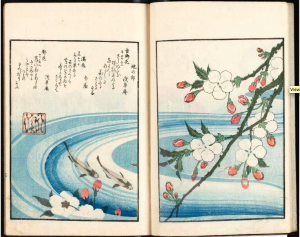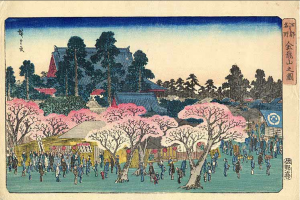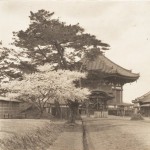Very Cherry
It is the height of cherry-viewing season in Japan, according to my online Cherry Blossom Forecast, with blooms at their peak in Tokyo, Osaka and Kyoto.
Since the 5th century, when Emperor Richiu had himself rowed around his lake under their boughs, the annual appearance of the cherry blossoms has been a cause for celebration in Japan. As Richiu passed close to the bank, a few delicate petals fluttered down into the glass of wine he was holding, the ultimate aesthetic moment, causing subsequent generations to ask, “without wine, who can properly enjoy the sight of the cherry blossom?”
At the crux of this poetic pastime, however, is the notion that the fragile, short-lived beauty of the blossoms perfectly represents the fleeting beauty—and ultimate dissipation—of all things. The cherry blossom is often used to explain the key Japanese aesthetic principle of mono no aware, the feeling we have when seeing beauty in the world, beauty that must disappear. It’s an ‘ah’ sort of moment. (More on Japanese aesthetics in the book.)
Though the pastime is now a major Japanese cultural event, hitting its heights during the Edo period (1603-1868), when the blossoms were a favorite subject for ukiyo-e artists and made a popular motif in kabuki theater, it began with the nobility. In the 11th century story, Tale of Genji, the narrator describes an April visit to Lady Murasaki‘s Spring Garden:




Comments